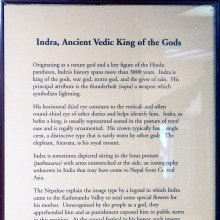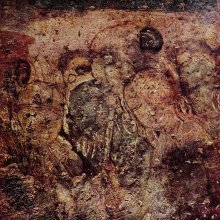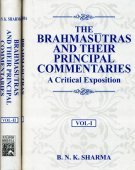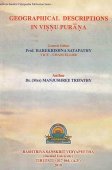Lightning: 2 definitions
Introduction:
Lightning means something in Hinduism, Sanskrit. If you want to know the exact meaning, history, etymology or English translation of this term then check out the descriptions on this page. Add your comment or reference to a book if you want to contribute to this summary article.
Images (photo gallery)
In Hinduism
Shilpashastra (iconography)
Source: Shodhganga: Elements of Art and Architecture in the Trtiyakhanda of the Visnudharmottarapurana (shilpa)Lightning is associated with the Rainy season (Monsoon), which follows specific guidelines of ancient Indian Painting (citra), according to the Viṣṇudharmottarapurāṇa, an ancient Sanskrit text which (being encyclopedic in nature) deals with a variety of cultural topics such as arts, architecture, music, grammar and astronomy.—The Viṣṇudharmottarapurāṇa gives some instructions to make the picture of every season beautiful and natural. As per the Viṣṇudharmottarapurāṇa, Varṣā i.e., the rainy season which is also known as monsoon period should be portrayed with the picture of birds hiding in the trees to get rid of rain, lions and tigers taking shelter in their caves, clouds, rainbow and sparks of lighting in the sky. [...] Thus, the Viṣṇudharmottarapurāṇa addresses various elements of nature, such as lightning in the rainy season, since painting has much connection with time, mood and activity.

Shilpashastra (शिल्पशास्त्र, śilpaśāstra) represents the ancient Indian science (shastra) of creative arts (shilpa) such as sculpture, iconography and painting. Closely related to Vastushastra (architecture), they often share the same literature.
Ayurveda (science of life)
Toxicology (Study and Treatment of poison)
Source: Shodhganga: Kasyapa Samhita—Text on Visha ChikitsaLightning is denoted by the Sanskrit term Aśani and is mentioned as one of the sworn enemies of Snakes (Sarpas), as taught in the Kāśyapa Saṃhitā: an ancient Sanskrit text from the Pāñcarātra tradition dealing with both Tantra and Viṣacikitsā (Toxicology).—The Kāśyapasaṃhitā (verse IV.33) talks about the sworn enemies of Sarpas (snakes): Boar, aśani (lightning), peacock, eagle, cat, mongoose and wolf are its sworn enemies.

Āyurveda (आयुर्वेद, ayurveda) is a branch of Indian science dealing with medicine, herbalism, taxology, anatomy, surgery, alchemy and related topics. Traditional practice of Āyurveda in ancient India dates back to at least the first millenium BC. Literature is commonly written in Sanskrit using various poetic metres.
See also (Relevant definitions)
Starts with: Lightning bush.
Full-text (+777): Vidyut, Tadit, Saudamani, Vidyullata, Saudamini, Vajrapata, Sampa, Vaidyuta, Shatahrada, Aciradyuti, Irammada, Bijali, Meghadipa, Asani, Anubha, Aciraprabha, Vipa, Ghanajvala, Nilanjana, Cancala.
Relevant text
Search found 252 books and stories containing Lightning; (plurals include: Lightnings). You can also click to the full overview containing English textual excerpts. Below are direct links for the most relevant articles:
Brahma Sutras (Shankaracharya) (by George Thibaut)
IV, 3, 3 < [Fourth Adhyāya, Third Pāda]
IV, 4, 20 < [Fourth Adhyāya, Fourth Pāda]
IV, 3, 6 < [Fourth Adhyāya, Third Pāda]
Chandogya Upanishad (Shankara Bhashya) (by Ganganatha Jha)
Section 7.11 (eleventh khaṇḍa) (two texts) < [Chapter 7 - Seventh Adhyāya]
Section 4.13 (thirteenth khaṇḍa) (two texts) < [Chapter 4 - Fourth Adhyāya]
Section 5.5 (fifth khaṇḍa) (two texts) < [Chapter 5 - Fifth Adhyāya]
Mundaka Upanishad with Shankara’s Commentary (by S. Sitarama Sastri)
Verse 2.2.10 < [Mundaka II, Khanda II]
Manusmriti with the Commentary of Medhatithi (by Ganganatha Jha)
Verse 1.38 < [Section XXII - Creation of Clouds, etc.]
Verse 4.103 < [Section XIII - Days unfit for Study]
Verse 5.94 < [Section IX - Other forms of Impurity]
Yoga Vasistha [English], Volume 1-4 (by Vihari-Lala Mitra)
Chapter LXVIII - Description of a rakshasi (or female fiend) < [Book III - Utpatti khanda (utpatti khanda)]
Chapter LXXVI - The stridor of pushkaravarta clouds < [Book VII - Nirvana prakarana part 2 (nirvana prakarana)]
Chapter XXX - Fall of hiranyakasipu and rise of prahlada < [Book V - Upasama khanda (upashama khanda)]
Francis Thomson and Gerard Manley Hopkins: < [October – December, 2005]
A Note on Padmavaty’s Poetry < [October – December, 1995]
A Philosophy of Sceptical Culture < [September 1945]
Related products






